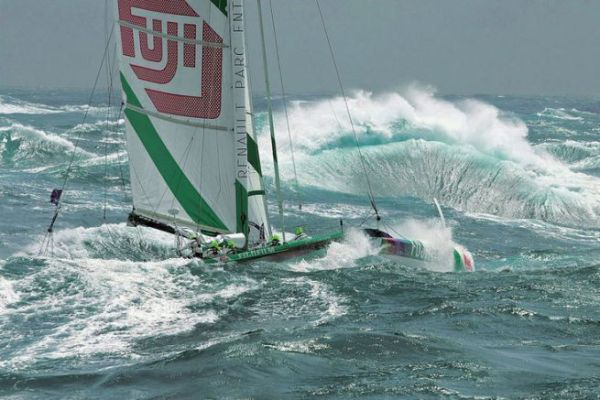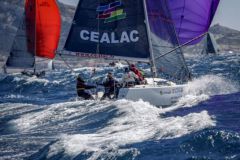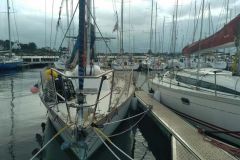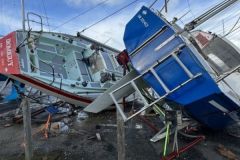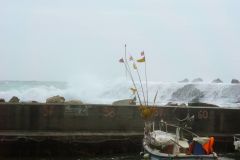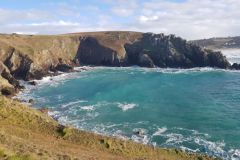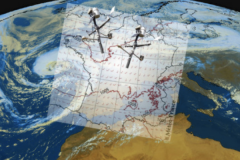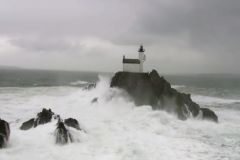While scientists appreciate testimonials, they much prefer measurements.
For centuries, many sea reports such as those of Christopher Columbus or Dumont d'Urville attested to the existence of truly excessive waves. Phenomena always described as isolated, unpredictable and destructive. This gave rise to legends and fanned the flames of myths such as that of the bermuda Triangle .
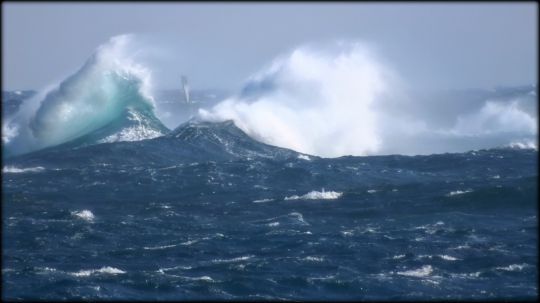
Since no technique allowed wave height measurements, scientists were skeptical of seafarers' accounts.
In the mid-twentieth century, it was necessary to face the facts: evidence from modern ships and measurement systems suggested that these waves were much higher and more violent than others.
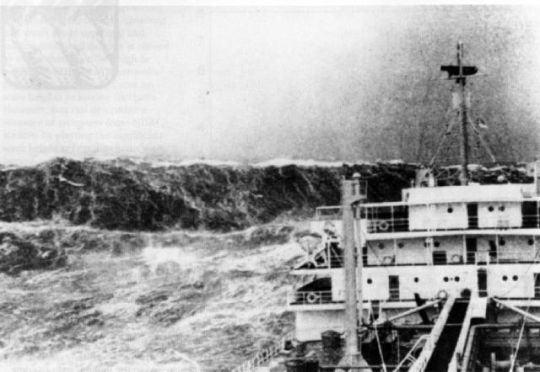
The first measure of a scoundrel wave
And it was on 1 January 1995 that one of them was measured for the first time. It was in the North Sea, on the Draupner oil platform, where it went down.
The platform was equipped with a probe measuring the elevation of the sea surface. The recording revealed the monstrous height of 26 metres while the average waves were 12 metres high. The existence of rogue waves, also known as Draupner waves, was now officially recognized.
What are the characteristics of these vagues??
When we talk about rogue waves, we are talking about phenomena that occur in the open sea and in calm waters as well as during a storm. These waves have the particularity of being twice as high as the average height of the surrounding waves and have a very short life span (about 20 seconds).
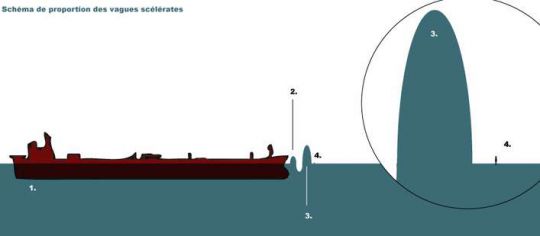
This diagram provides an overview of the importance of the rogue wave phenomenon by giving a comparative scale.
1- On the left, a supertanker almost 460 meters long, the longest maritime vessel in the world.
2- A wave of classic height in stormy weather, i.e. about 12 meters.
3- A scoundrel wave some 30 meters high
4- A Homme?!
But how do these phenomena form-- ils??
Scientists had understood that these rogue waves absorb and return the energy of other waves.
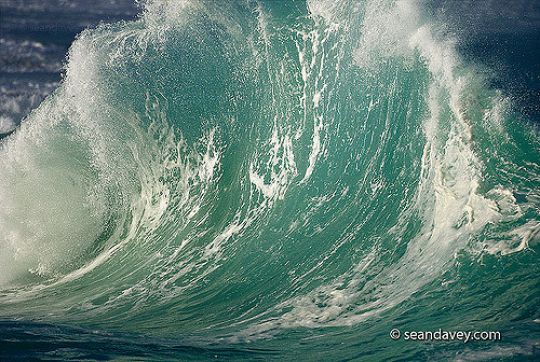
But they had not yet been able to measure and reproduce this phenomenon in the laboratory. But the Scottish team did, and reproduced the conditions necessary for the formation of a rogue wave. This mini-wave, born in a special pool, allowed them to study precisely the physics of a very complex phenomenon using quantum mechanics (notably Schrödinger's equation).
What do they have découvert?? It's a matter of angle.
The behaviour of these breakers had never been observed before. The study was carried out in a circular pool 25 metres in diameter to test the potential of marine energy.
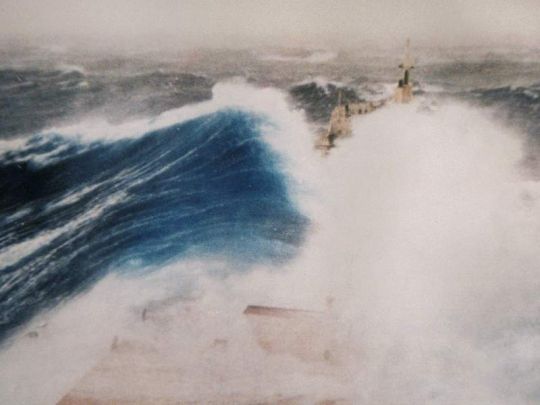
Researchers have been making waves there. When they don't intersect, their height is limited by the surf.
But when two wave fronts meet at an angle of 120°, the Draupner wave phenomenon occurs. And Scottish researchers have been able to create, observe and model an artificial "rogue mini wave".
What about maintenant??
Science confirms what sailors already knew, rogue waves do exist. We boaters are familiar with the notion of the cross sea, the sea that is often referred to as a "ship breaker".
By understanding this mechanism and modeling it, researchers hope to be able to anticipate rogue waves. It is conceivable that soon navigation software will be able to incorporate a function or index of "risk of rogue waves".

These waves have indeed already been the cause of shipwrecks or serious accidents. Draupner waves can reach peak-to-trough heights of over 30 metres and phenomenal pressures.
For example, a normal 3-metre high wave exerts a pressure of 6 tonnes per square metre. A 10-metre high storm wave can exert a pressure of 12 tonnes per square metre. A 30-metre high rogue wave can exert a pressure of up to 100 tonnes per square metre.
No vessel is currently designed to withstand such pressure.
The video experience
Teams of researchers from Oxford and Edinburgh Universities have produced a video showing the formation of a rogue wave. The wave thus created in their laboratory bears an incredible resemblance to "The Great Kanagawa Wave" by the Japanese painter Hokusai. This print depicts fishermen whose boats are caught in a terrifying and fascinating wave.
